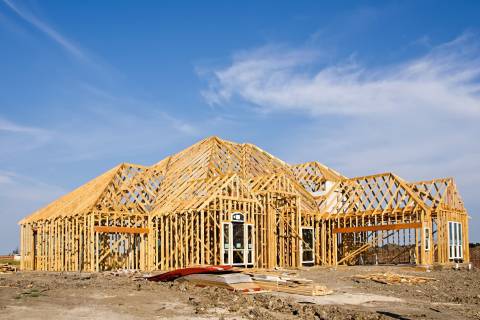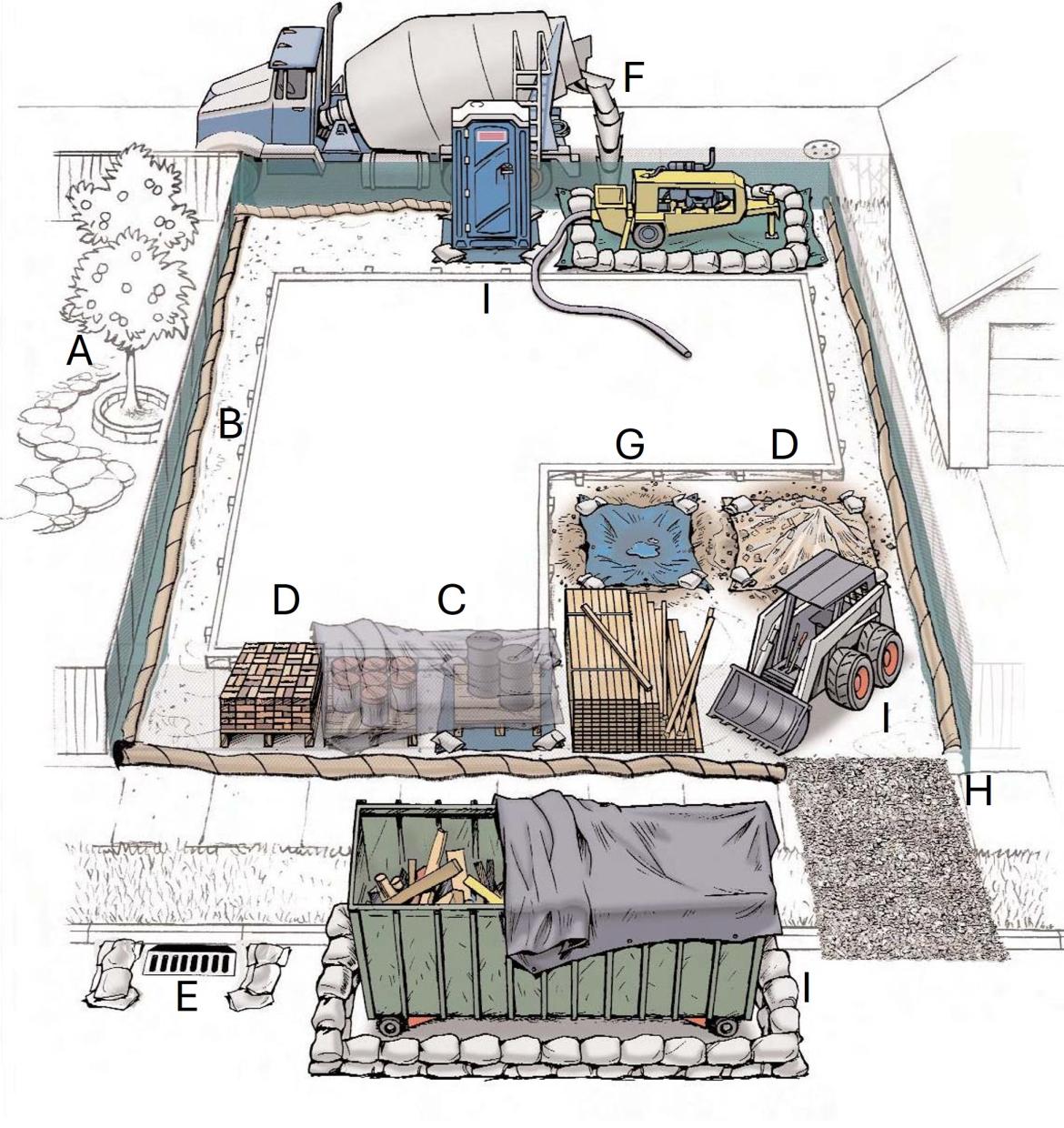
Why do Stormwater Discharges from Construction Sites Matter?
When it rains on a construction site, stormwater runoff can pick up pollutants like sediment, debris, trash and chemicals and carry them into local waterways. Contractors and builders have the responsibility to implement control measures (i.e., best management practices) that prevent pollutants from leaving their sites.
Knowing and following best management practices also saves money by keeping your project on track and avoiding penalties. Be sure to know the codes and stormwater development requirements of the jurisdiction in which work is being performed before undergoing any land disturbing activities.
To learn more about other construction related resources, please visit the websites highlighted for “Construction and Maintenance” on our Stormwater Helpful Links page.
Construction Permits
Builders and contractors are required to permit their land disturbing activities if that work will disturb one or more acres of land.
- Obtained from the Colorado Water Quality Control Division
- Construction Stormwater Permit (COR400000)
- Dewatering General Permit – There are several depending on you project needs
- Discharges of Dredged and Fill Material into State Waters – Regulation 87
- Obtained from Larimer County Engineering
- MS4 permit if your project is within the County’s MS4 permit area. Please see our MS4 webpage for details and how to apply for a permit.
- Other construction permits can be found on the "Permits" webpages
Implementing Pollution Control Measures at your Construction Site
Below are just some of the common construction activities and control measures to consider for your project. Any construction project should develop a Stormwater Management Plan that lays out at minimum the following:
- Identify who is responsible for implementing the Stormwater Management Plan, their contact information as well as the contact information for response in the event of a spill or other emergency.
- Spill prevention and response plan
- Materials handling plan
- Potential sources of pollution
- Control measures, their specifications and installation methods
- Site map
- Plan for final stabilization/landscaping
If the land disturbance is one or more acres, then a more extensive stormwater management plan is required. Please visit the CDPHE Water Quality Control Division’s webpage for the general Construction Stormwater Permit (COR400000) where you can find several guidance documents to help you develop and implement the stormwater management plan and comply with the permit.

A. Preserving Existing Vegetation
- Preserve existing trees and vegetation where possible to prevent erosion.
- Make sure all work stays within the limits of the project area
B. Perimeter Controls
- Silt fences, straw wattles, orange fencing, compacted earthen berm are typical perimeter controls, and shall be used to surround the entire site.
- Always maintain your perimeter controls and replace any damaged ones immediately.
C. Paint and Stucco
- All paint and stucco materials stored on the site must be contained and covered.
- It is illegal for contractors to wash out paintbrushes in the street or dump any residues into the sewer or the storm drain. Paintbrushes and spray guns shall be washed/cleaned out into a hazardous materials barrel or put back into its original container and disposed of properly.
- Latex paint should be dried in its container and placed in the garbage. Oil paint and thinners need to be recycled as hazardous waste.
- Keep extra absorbent materials and/or a wet/dry vacuum on site to quickly pick up unintended spills.
- Sites must also be checked and maintained daily. All chemicals and hazardous materials must be secured to prevent vandalism.
D. Building Materials and Staging Areas
- Materials stockpiles need perimeter control to prevent materials moving away from the stockpile. Small stockpiles can benefit from being covered with not in use.
- Straw wattles, silt fence or compacted berm can all work well. Replace any damaged perimeter controls immediately.
E. Storm Drains and Catch Basins
- Storm drains must always be protected with control measures that prevent anything other than clean stormwater to enter.
- There are many different types of control measures available, and the choice should depend on your situation.
F. Concrete Waste Management
- Designate a concrete washout area and provide visible signage.
- This area is for concrete wash water or liquid concrete waste/stucco from onsite concrete mixing or concrete delivery.
- The washout area must be checked and maintained daily to ensure compliance.
G. Dirt and Grading
- Did you know that sediment is considered a pollutant? When sediment gets into waterways it increases turbidity (cloudiness) which makes it hard for fish to breathe. You are responsible for preventing sediment from leaving your construction site.
- Sediment comes from erosion of soils. Using control measures to prevent erosion is key to a well-managed construction site. If erosion does happen, sediment control measures will minimize the impacts of erosion.
- There are many different types of erosion and sediment control measures and what you use depends on your construction site needs. Always use control measures that are in accordance with good engineering hydrologic and pollution control practices.
H. Vehicle Tracking
- Control measures to prevent vehicle tracking of sediments from the construction site or staging area needs to be implemented.
- Street sweeping of materials tracked off the project area should also be implemented.
I. Waste Management
- Keep dumpsters covered and make sure the area around the dumpster is kept clean.
- Toilets, porta-johns, etc. need to be maintained in operating condition, be located away from waterways and storm drain inlets, and be tied or staked down to the ground.
